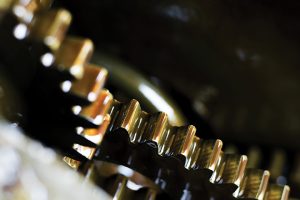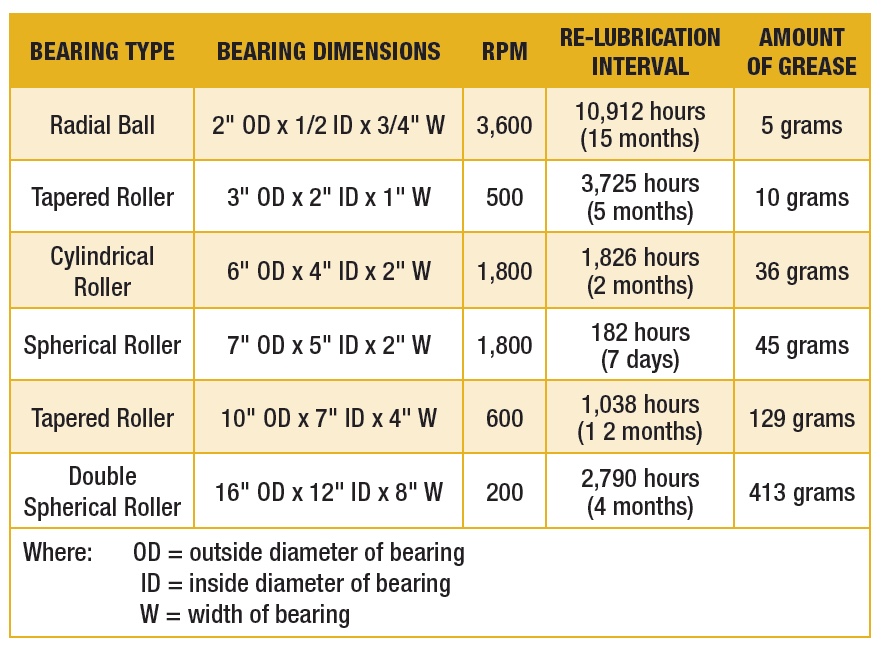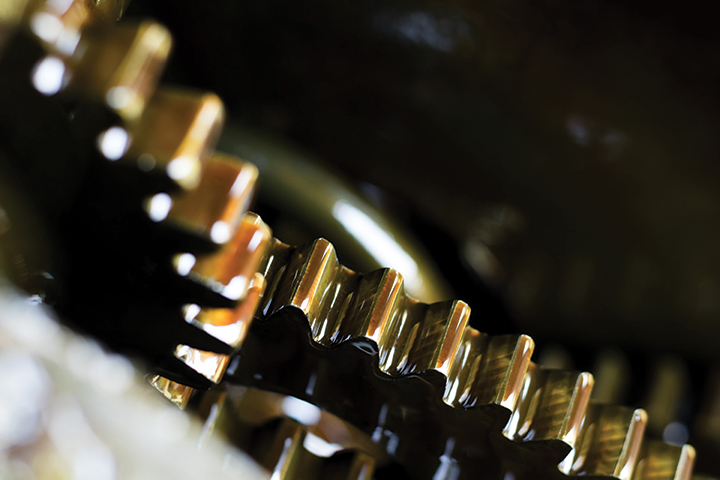

Photo Credit: Getty Images.
Greases can be a complex subject, but a sound knowledge of grease types and their uses ensures intelligent maintenance decisions. The National Lubricating Grease Institute (NLGI) has a publication entitled The Lubricating Grease Guide, which provides grease lubrication guidelines, that, if followed, provide sound maintenance practices. The grease type, grade selected and amount used are directly dependent upon factors such as the application, bearing type and speed, operating temperature, seal or retainer design, contamination potential, re-lubrication interval and quantities of grease required.
Although there are many grease types based on their thickener (soap), type (calcium, lithium, aluminium, or sodium), or NLGI grades, (000 semi-fluid to six-block grease), this quiz will deal only with the most common grades of one, two, and three, as well as more common thickener types like lithium, lithium complex, and non-soap polyurea.
NLGI grade one grease has a tendency to churn in a bearing; therefore, a lesser amount must be used in precision bearing high-speed applications and may have as little as 20 per cent of the bearing void filled with grease. Bearings used in lower speed applications may have as much as 80 per cent of the void filled with grade three grease. Consequently, the amount used in the bearing will be less critical. As a result, NLGI grade two grease is very commonly used in all industrial applications, while NLGI grade one is used extensively in centralized lubrication systems.
 1. How do you select grease type and grade for rolling element bearings?
1. How do you select grease type and grade for rolling element bearings?
Logic: When operating conditions preclude the equipment manufacturer or lubricant supplier recommendations: calculate the surface or DN speed of the bearing. Surface speed is determined by multiplying shaft diameter in millimetres x bearing rpm and adhere to the following guidelines. If the DN speed is less than 200,000, use grades one or two. At 200,000, use grade three, which will stay in place and a channel will form, permitting oil to separate from the thickener to lubricate the bearing.
At speeds higher than 200,000, conversion to oil is recommended. Ball, roller, or needle bearing types see variations of load within these speed ranges and the grease required should have mechanical stability and excellent oxidation resistance. Where operating temperatures do not exceed 121°C, lithium greases find wide use. Where temperatures are consistently higher, lithium complex or polyurea greases are superb.
2. How do you select grease type and grade for journal bearings and open gears?
Logic: Selection and application of grease for journal bearings and open gears is opposite of rolling element bearings. These applications require grease to stay in place and a higher NLGI grade, such as three, four, or five, might be necessary. Extreme pressure or solid lubricant additives such as molybdenum or graphite may be required for wear control.
3. Is your maintenance staff trained in grease lubrication practices?
Logic: Knowledgeable lubrication specialists will be aware of the following considerations. If too much grease is present, internal friction will cause the temperature to rise above its dropping point, causing oxidation of the grease. Mixing of in-compatible greases can result in extreme softening, causing the lubricant to separate from the thickener (conventional polyurea greases are not compatible with most greases, while lithium grease is compatible with many types).
Pressures of up to 15,000 psi can be generated with a common grease gun, and when lubricating a bearing in housings without a grease vent, seals are frequently damaged. When greasing a vented bearing housing, remove the vent with the bearing stopped and apply grease until the new grease comes out of the vent. With the vent still removed, rotate the bearing slowly so that excess grease can escape from the vent. After one to two hours of operation, check the temperature of the bearing housing to ensure that it is normal and replace the vent. The temperature at the housing should not exceed about 60°C.
When re-lubricating an electric motor, it may not be necessary to stop the motor, but re-greasing at a standstill will minimize the possibility of grease leakage along the shaft past the seals. If re-greasing is carried out while the bearing is rotating, the temperature of the bearing will increase 10 to 25°. This is normal due to the internal friction created by the new additional grease. The temperature should drop after an hour or two of operation, depending upon the application. If the temperature does not return to normal and the correct amount of grease has been added based on the calculations described below, do not add more grease but determine the cause of the increase in temperature.
4. Does your maintenance staff apply correct re-lubrication intervals and grease quantities based on operating temperatures and contamination considerations?
Logic: Mineral-based oil begins to oxidize at 70°C and it is important to remember “the service life of mineral oil based grease in rolling element bearings is reduced by half for every 15°C increase in temperature above 70°C.”
For example, the calculated re-lubrication interval for a bearing is 1,000 hours at 70°C; this interval should be halved to 500 hours if the operating temperature reaches 85°C. At 100°C the interval decreases to 250 hours. At 115°C the interval further decreases to 125 hours. Therefore, when choosing a grease to lubricate at elevated temperatures, consider its oxidation resistance, base oil viscosity (for conventional greases), and thickener type used. Estimate the maximum temperature that the grease can withstand.
For example, typical lithium grease has a dropping point temperature of 175°C. Subtract the 40-degree standard from 175; the resulting number of 135 is approximately the maximum intermittent operating temperature that a grease can withstand before oxidation begins. The chart on page 22 provides guidelines for re-lubrication intervals and grease quantities for common rolling element bearings and their corresponding speed at room temperature and ambient conditions.

